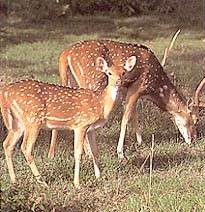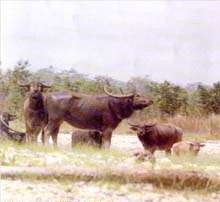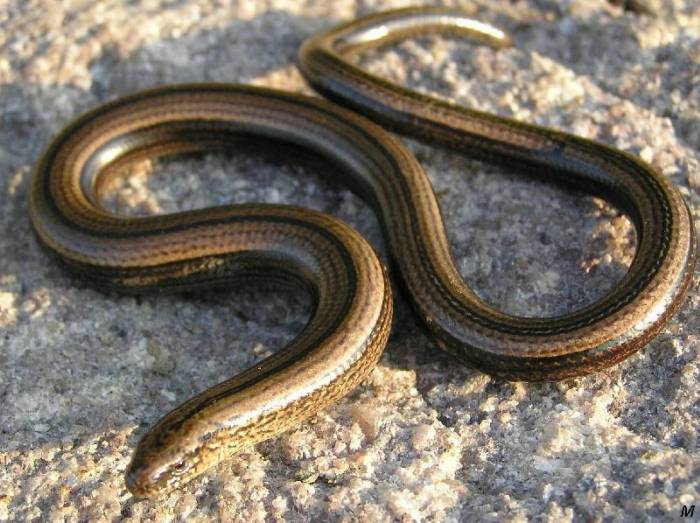India > Wild Life > East Zone
India Wildlife
East Zone : Assam, West Bengal, Orissa
Kaziranga National Park, Assam
Kaziranga National Park located on the banks of the River Brahmaputra. The Kaziranga National Park encompasses a total land area of 668 sq km. The area became a wildlife sanctuary in the year 1950 and became a National Park in 1974.
This wildlife sanctuary was established to primarily protect the one-horned Indian Rhinoceroses (1000 in number). Other animals found are sloth bears, leopard cats, hog badgers, elephants, gibbons, Indian bison, porcupines, pythons, wild buffaloes, hog deer, swamp deer and hoolock pigs.
The vegetation at the Kaziranga National Park consists of vast stretches of tall elephant grass and dense tropical forests. The Karbi, Anglong and Barail Hills lie on the South of this massive wildlife sanctuary and national park.
Tigers which are natural enemies of rhinos are also there in sizable number. Other attractions of this national park include the wild buffalo, magnificent swamp deer, hog deer, wild boar, Hoolok gibbon, capped langur and ratel (badger).
A wide variety of snakes including the rock python and the monitor lizard are also found here. Amongst the birds, the crested serpent eagle is common while palla's fishing eagle and gray headed fishing eagle are frequently seen.Others include the Great Adjutant Stork, crane, Bengal floricab, bar-headed goose, whistling teal, and pelican.
Mihimukh is the starting area for the park and elephants can be hired from here to enter the sanctuary. Jeep safaris and early morning elephant rides can be arranged for at the Tourist Centre here.
Best Season : November to April.
Jaldapara, Assam
The most well known of West Bengal's wild life sanctuaries is the Jaldapara wildlife sanctuary. It is one of the last refuges in the world for the one horned rhino, an animal threatened with extinction. At Jaldapara, the forest is mainly savannah. Tourists may view wildlife from the back of an elephant. Experienced scouts lead the visitors to the exact spots in the forest where a rhino, a tiger or a herd of deer may have taken shelter on the day and at that hour.
Manas National Park, Assam
This wildlife park is 2,837 sq km in area and is covered with grasslands and dense Sal forests. This wildlife sanctuary got its name from the River Manas that flows nearby. Manas is a very special biosphere, for it harbors twenty species of birds and animals that are highly endangered and listed in the IUCN red data book. Among the highly endangered species are the attractive Red Pandas which are occasionally in the higher elevation.
Initially the park was a wildlife sanctuary but in 1990 it was declared a national park. This park is well known as one of the world heritage sites having its unique combination of scenic beauty and rare wealth of wildlife.
The park has eastern Himalayan moist mixed deciduous forests covering. The lush green park is densely covered by trees and growth which often prevents the sun rays from entering the forest. The eastern alluvial grassland also covers a major portion of the national park. These grassland are grazing grounds for many herbivores. Manas also shows variety by mixing low alluvial savanah wood land and Assam valley semi evergreen forests.
Being a tiger reserve, Manas is famous for tigers. The other exclusive species is the pygmy hog. The park harbors about 20 species of animals - the range varies from herbivores to omnivores. The animals include panther, clouded leopard, marbal cat, golden cat, fishing catand other variety of cats. Elephant, rhino, swamp deer, sambar, barking & hog deer, pangolin, dhole, binturong, otter, bison, buffalo, golden langur, spotted deers are some of the animals who roam the jungles.
Birds found here are Bengal florican and the great pied hornbill. Migratory birds in winter are mergansers, a range of egrets, Forktails, Riverchats, Ruddy Shelduck, Cormorants and brahminy ducks.
Best Season : October to April. Avoid the monsoon as many parts of the park is flooded.
How to Reach : This sanctuary is 176 km from Guwahati. The entry permit will be issued by the Field Director in Barpeta.
Betla National Park
Palamu shot to lame as early as 1932 for its tiger census - the first of its kind in the world. In 1974 it became one of the country's earliest tiger reserves. Endowed with thick tropical forests and a rich variety of fauna, the core area of the sanctuary has been declared as Betla National park (232 sq km). This park is a great attraction to tourists. The Park, at an average elevation of 1,000 ft is open throughout the year although February to April are the best months. Large herds of Gaur and Chital are commonly seen. Elephants are present mostly after the monsoons up to the time when water holes begin to dry up in March. Tiger, Panther, Sloth Bear, Wild Bear, Sambhar, Nilgai, Kakar, Mouse Deer are also permanent residents. Large families of langurs are an ever present attraction. Palamu is now one of the nine Tiger Reserves in India under Project Tiger. It is 140 km from Ranchi.
Malbazaar
In the northwest of the Dooars and about 60 km from Siliguri is a scenic spot surrounded by lush green tea gardens. From New Jalpaiguri, one can go to Dhupguri or Mainaguri. The Malbazar Tourist Centre, beside a beautifully laid out garden, the Malbazar Park, may be approached either from Mainaguri or Dhupguri, if travelling by broad gauge. The National Highway starts from Siliguri and crosses the Dooars from west to east. Malbazar is right on the highway.
Wildlife Sanctuaries - Jaldapara, Chapramari, Gorumara, Mahananda.
Chapramari
The deer are varied - sambar, barking deer, spotted deer and of course hog deer. There are also elephants, gaurs, pigs, reptiles, birds and fishes. The animal population of Gorumara is similar to that of Jaldapara. At Chapramari, there is a large heronry.
Mahananda Wildlife Sanctuary
Mahananda wildlife sanctuary is located between Teesta and Mahananda rivers. Fauna include tiger, leopard, fishing cat, jungle cat, leopard cat, gaur, cheetal, elephants, civets, barking deer, sambar, Rhesus monkeys, langurs and birds.
Namdapha National Park

Tucked away in the northern-most state of Arunachal Pradesh is the Namdapha National Park. Three major rivers drain this area and flow into the Noa Dihing, a tributary of the Brahmaputra. The Park largely inaccessible has diverse habitats and flora and fauna that are typical of this area. The majestic gaur or mithun, elephant, Himalayan black bear, takin, the wild goat peculiar to the Patkoi range, musk deer, slow loris, binturong and the red panda are all found here. The predators include the tiger, leopard, the rare snow leopard and clouded leopard in the higher reaches of the hills. A number of primate species are to be seen in the Park, such as the Assamese macaque, pig-tailed macaque, stump- tailed macaque and the distinctive hoolock gibbon. Hornbills, jungle fowl and pheasants flap their noisy way through the jungle, which harbours other colourful bird species. The inaccessibility of the greater part of the Park has helped to keep the forests in their pristine state. This is also a Tiger Reserve under Project Tiger.
Pabha Wildlife Sanctuary
Covering an area of 49 Sq km, Pabha wildlife sanctuary is situated in Lakhimpur District. It is a sanctuary created exclusively for the Protection of the magnificent Wild water Buffalo. For details please contact the Chief Conservator of Forest, Narengi Road, Guwahati, Assam.

Sonai Rupai Wildlife Sanctuary
This wildlife sanctuary, 175 Sq km in area, is situated in the Sonitpur District Extending along the Himalayan foothills it offers magnificent view of both scenic beauty and wildlife. The sanctuary is the home of Elephant, Indian bison, deer and a variety of hill birds. For visiting this sanctuary, tourist/visitor may contact the Divisional Forest Officer, Western Assam wildlife Division, Tezpur. District Sonitpur (Assam) or the Deputy Director, Tourism, Govt. of Assam, Tezpur, Sonitpur dist, Assam.
Sunderbans Wildlife Sanctuary, West Bengal
The Sunderbans consist of a 2608 sq km huge marshy delta that came into existence at the conflulence of two mighty rivers the Ganges and the Brahmaputra. The Sunderban delta got its name from the fact that the area is totally covered with mangrove trees that are popularly known as the Sundari trees. Besides the mangrove trees there are other trees such as the Dhundal, Passur, Genwa, Garjan and Kankra. Sunderbans is a network of rivulets, dense mangrove forests and 54 tiny islands with dense vegetation.
Most of the tigers (200 Royal Bengal Tigers) at these mangrove forests are excellent swimmers. This wildlife sanctuary also has a considerable population of crocodiles, the Ridley Sea Truttle and the Gangetic Dolphin.
The Sunderbans wildlife sanctuary offers a habitat for a variety of reptilian fauna such as the River Terrapin, Monitor lizard, Water monitor and the Indian python.
Best Season : September to March. Travel around the sanctuary in a launch.
Chilka Lake Bird Sanctuary, Orissa
The Chilka Lake Bird Sanctuary is visited by more than 1 million migratory birds. The Nalbana bird sanctuary is the core area of this wildlife park. The Chilka Lake is known for its brackish water and has the distinction of being the largest tropical lake in Asia. This pear-shaped lake is a salt-water lagoon that is dotted with tiny islands (Parikud and Malud) that offer a perfect habitat for different bird species.
The Nalbana bird sanctuary that lies in and around this lake is home to myriad species of birds that include white-bellied sea eagles, jacana, purple moorhen, greylag geese, herons and flamingos. The sanctuary is one of the largest breeding ground for flamingos.
The aquatic wildlife includes Irrawaddy Dolphin, prawns, crabs, the limbless lizard, crustaceans and more than 225 species of fish that include the Acentrogobius griseus, Alepes djedaba, Arius arius and the Elops machnata.
Limb less lizard

How to Reach : 100 km from Bhuvaneshwar. Balugaon is the nearest railway station.

